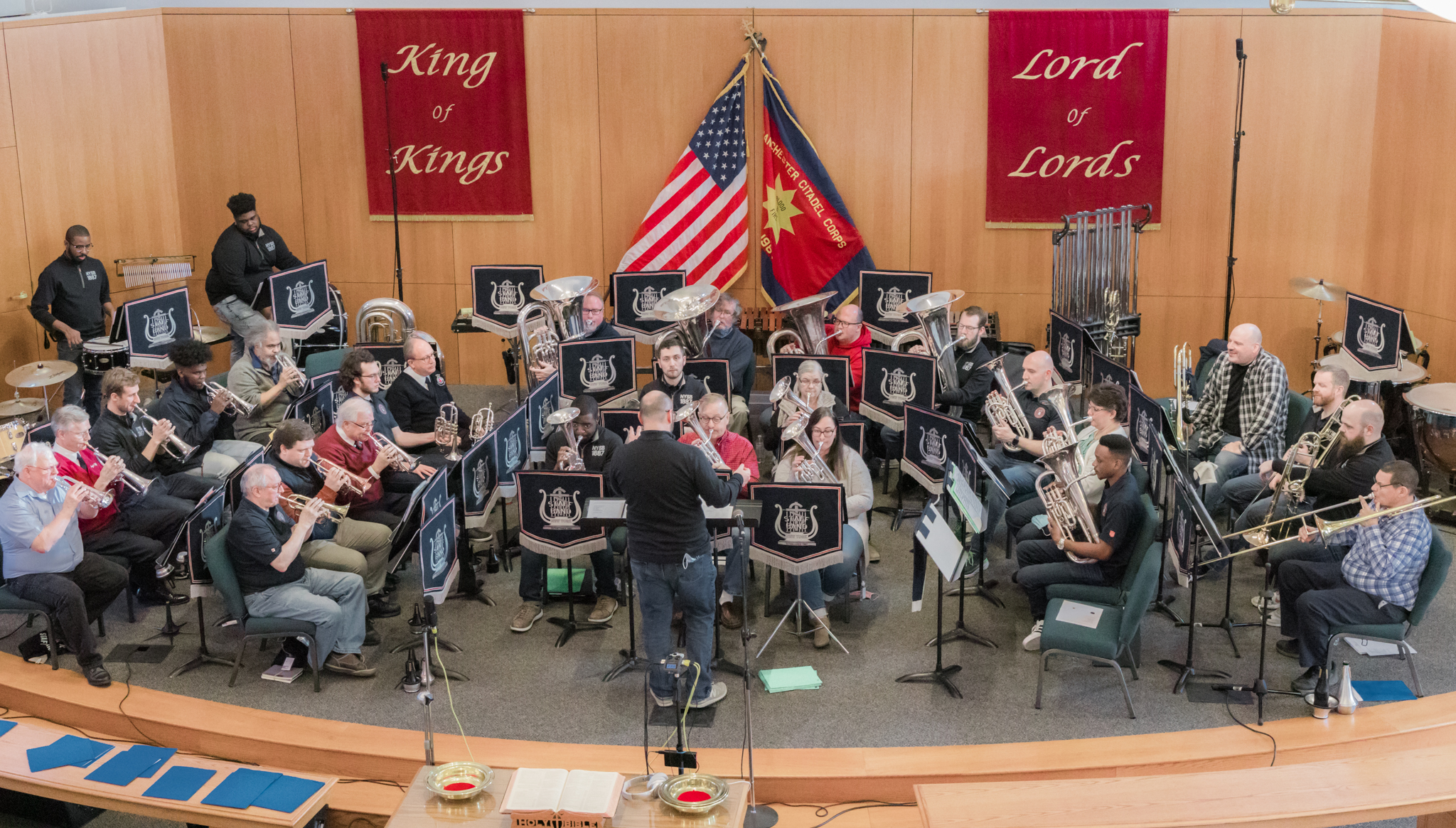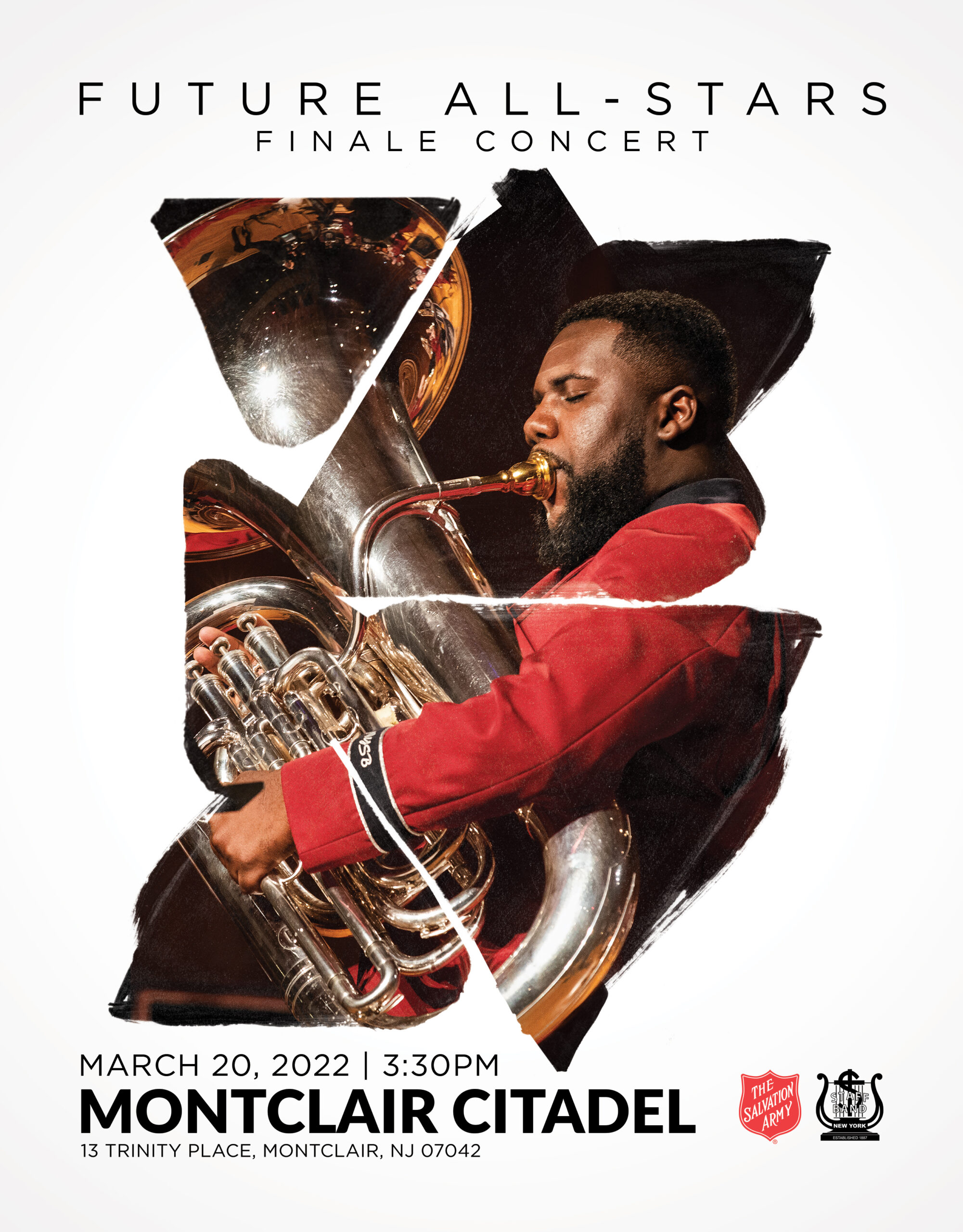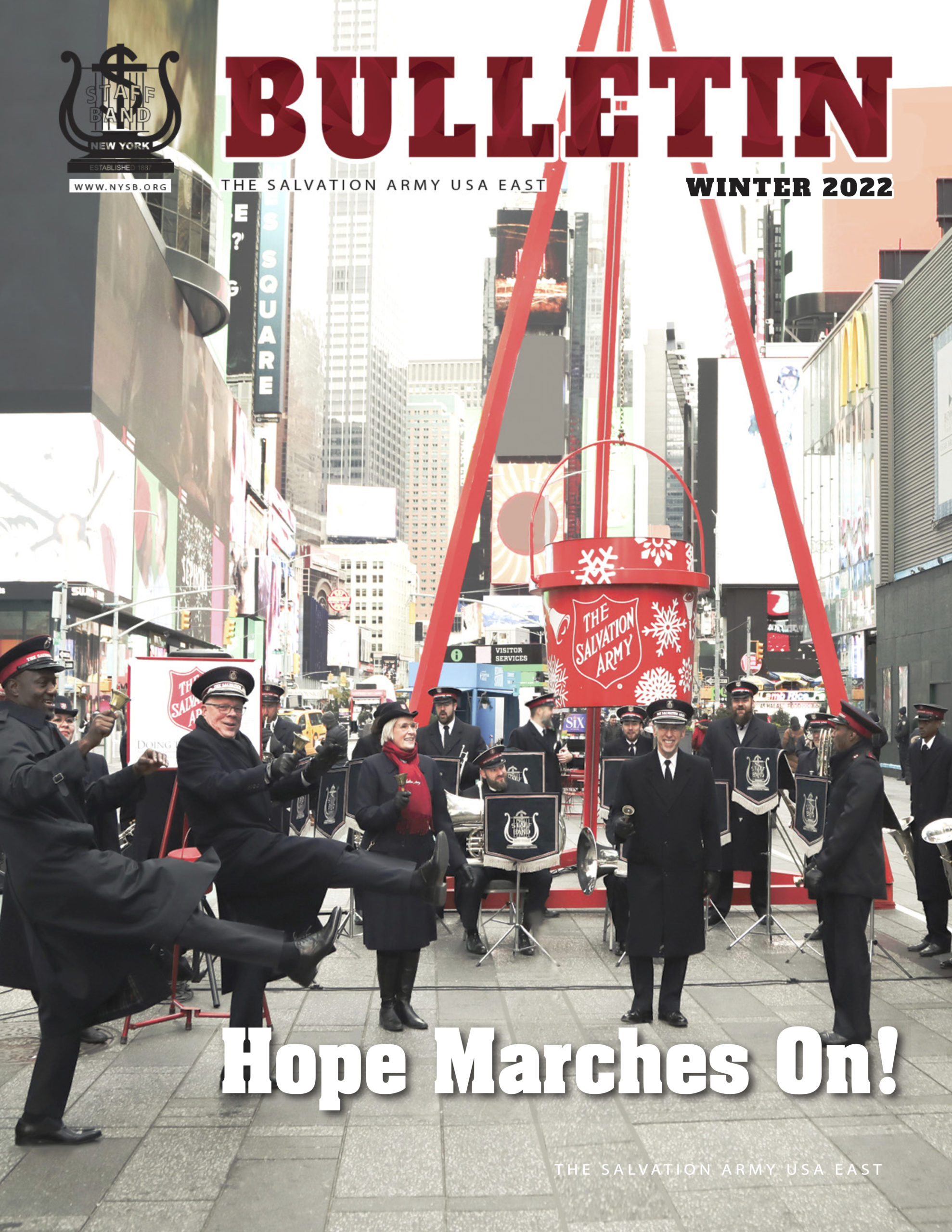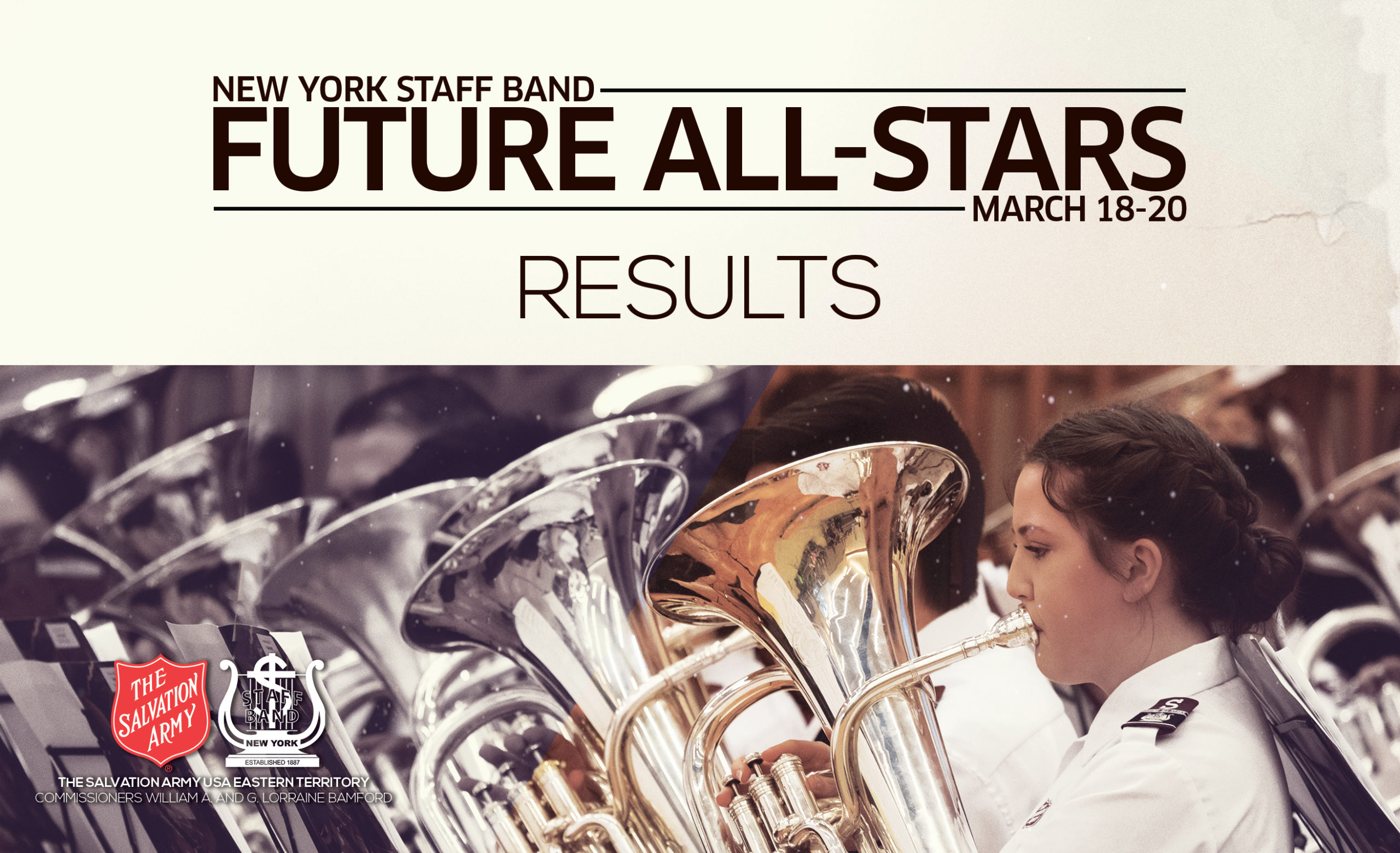It is unusual, as Dr. Ronald Holz points out in his very helpful notes accompanying this disc, to have a recording from a Salvation Army Band of music inspired by Holy week and Easter Sunday. Making a quick mental check, I can think of much more Salvation Army music linked to the Crucifixion than to the Resurrection. This disc provides a helpful overview of the complete picture and helps to redress a previous imbalance in recorded repertoire.
A new work, Easter Festival Prelude, written by Kenneth Downie, provides a very positive start, with its opening grave-bursting chords and ultimately jubilant rendition of the Easter Hymn, punctuated by frequent Alleluia motifs. The music’s final swerve into a new key, suggesting new life in the Resurrection, is negotiated with great skill, revealing the band to be in fine form.
The young, talented and prolific Canadian Salvationist composer Marcus Venables provides the first solo of the disc in The Essence of Faith, played on cornet by Derek W. Lance. What a voluptuous sound he makes! His technical skills are heard to great effect initially, then he displays great warmth in the slow central section, based on the tune Hendon, associated with the words, Take my life and let it be consecrated, Lord, to Thee. It all makes for a compelling performance of a most attractive work.
Beneath the Cross, Ray Starling, arranged by Mark Freeh, follows in sharp contrast, starting with sombre sounds before moving on to a smooth, laid-back jazz idiom, eliciting some memorable playing from the whole the band, and in particular from Douglas Berry on flugel horn.
The first of two substantial works on this recording is Logos, by Ray Steadman-Allen. I first remember hearing this work performed by the ISB in the 1960’s, under the direction of Colonel Bernard Adams, when I was a young music student. At that time I was greatly moved by the second movement in particular, which reflects on “TheWord (Logos) made flesh”, and meanders introspectively around the spiritual He never spoke a mumblin’ word. I was intrigued to discover how I might feel about this piece nearly fifty years on: I can only report that I find it even more moving, and I warmly recommend this music to a new generation of listeners. Thank you NYSB for this magnificent recording, and thank you RSA for a deeply rewarding listening experience.
The next soloist featured is Christopher Ward, on soprano cornet, who plays Philip Wilby’s arrangement of Malotte’s famous The Lord’s Prayer. It fits well in to the theme of this disc, which is always strongly focussed on its message, enabling the performers to embrace their raison d’etre as Christian musicians. Christopher displays just the right amount of sweet-toned tenderness in the early stages, before building convincingly to the powerful conclusion.
The band is fortunate to have as its Composer-in-residence and principal trombone, Dr. Dorothy Gates, who provides the next track See, what a morning. Hers is a brilliant, evocative “take” on Keith and Kristyn Getty’s hymn for Easter Day, carrying us from quiet expectation, perhaps sometimes tinged with a little fear, through to uninhibited celebration. A great track!
The next soloist is Timothy Ward, on Horn, who restores order with his performance of Norman Bearcroft’s Green Hill. The tune is surely one of the world’s great melodies, My love is like a red, red rose, which in this context is associated with the Good Friday hymn, There is a green hill far away. It is a fine arrangement, allowing the beauty of the melody to shine in its simplicity, and showing what a warm and fulsome sound can be produced by a good player on a tenor horn.
Dean Goffin wrote a number of works on the Passion of Christ, thereby enabling many of us to contemplate that subject profitably. The one chosen here is The Challenge of the Cross. Goffin brings the appropriate degree of gravitas to the hymns he uses, somehow finding time to develop motifs based on them and yet staying within the accepted timescale of the traditional pre-sermon Sunday evening meeting slot. How sad that such an occasion does not exist for many Salvationists any more, and that composers, (including me) are denied that special privilege of grappling with these opportunities for Spirit-filled music to make an impact in worship, as they so often did on those occasions. This performance carries a powerful message.
Some years ago I asked Professor Philip Wilby to come and speak to Salvationist composers at a seminar in the UK. During the course of his lecture he demonstrated some points regarding the construction of phrase lengths, using a song that he had just written, entitled Wondrous Cross. The song was so moving, simple and yet powerful, that I asked him if he would consider allowing the Salvation Army to publish it. He generously agreed to give us his work and the song has been a blessing to many since. Here the band plays Philip’s own arrangement of the song, enabling a wider audience to share in its exquisitely haunting beauty.
A substantial work from the pen of the late Leslie Condon brings the recording to an end. Easter Glory is a three-movement suite, each movement describing in turn the events of Good Friday, Saturday, and Easter Sunday. It is an amazing advantage in this recording to be able to listen to Les himself introducing his own music, courtesy of a recording made in 1976 at the Star Lake Musicamp. Those who knew him will find the experience of hearing him again very moving, as I did. Younger musicians who never knew him, will be held in thrall.
This fine performance highlights the composer’s skill at writing imaginative music, employing finely-honed compositional techniques which continually engage the listener. If he were alive today, Leslie Condon would surely relish the opportunities to use multi-media and film music. The work is a splendid piece of programme music, whose colours are vividly exploited by the band in this performance. After the savagery of Crucifixion, the brooding of “Day of Mourning” is extremely poignant. The final movement provides the recording with perfect symmetry, using as it does the same theme of Easter Hymn that was used in the Festival Prelude at the beginning. The closing pages, featuring exciting cross-rhythms and incisive percussion, inspire us to join with Charles Wesley in his final Easter Hymn verse.
Soar we now where Christ has led,
Following our exalted head;
Made like him, like him we rise,
Ours the cross, the grave, the skies.
What a thought with which to finish this recording. This is a disc with mature, refined music making and a clear Christian message. Congratulations to Staff Bandmaster Ronald Waiksnoris and all his musicians. It is a pleasure to recommend it.
Dr. Kenneth Downie





